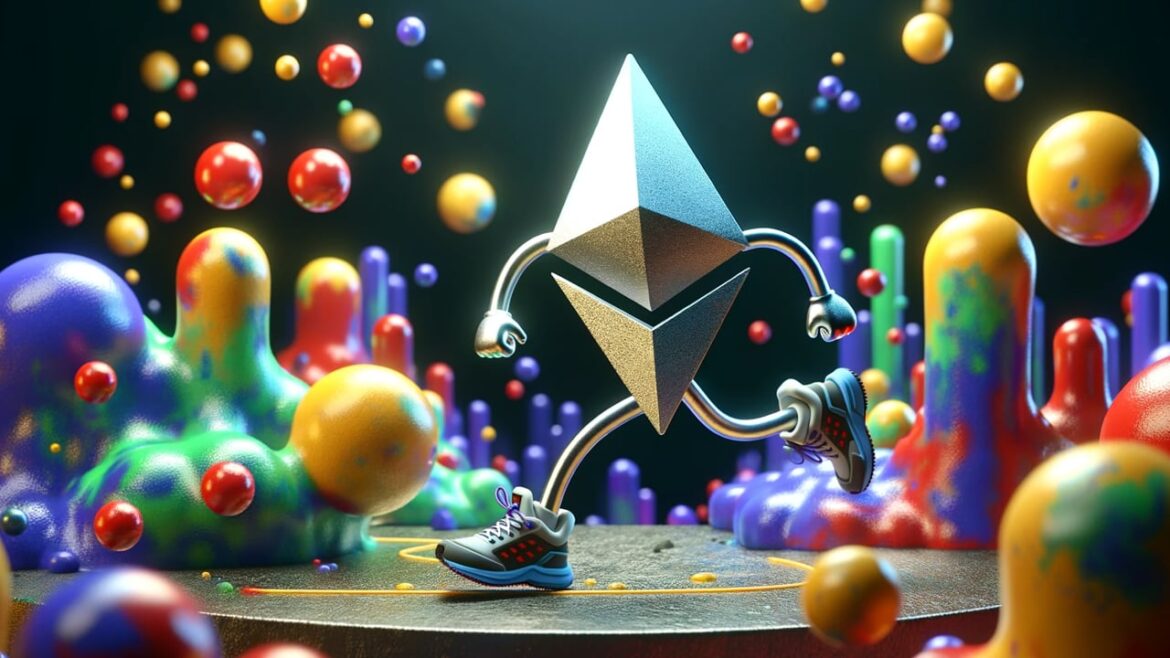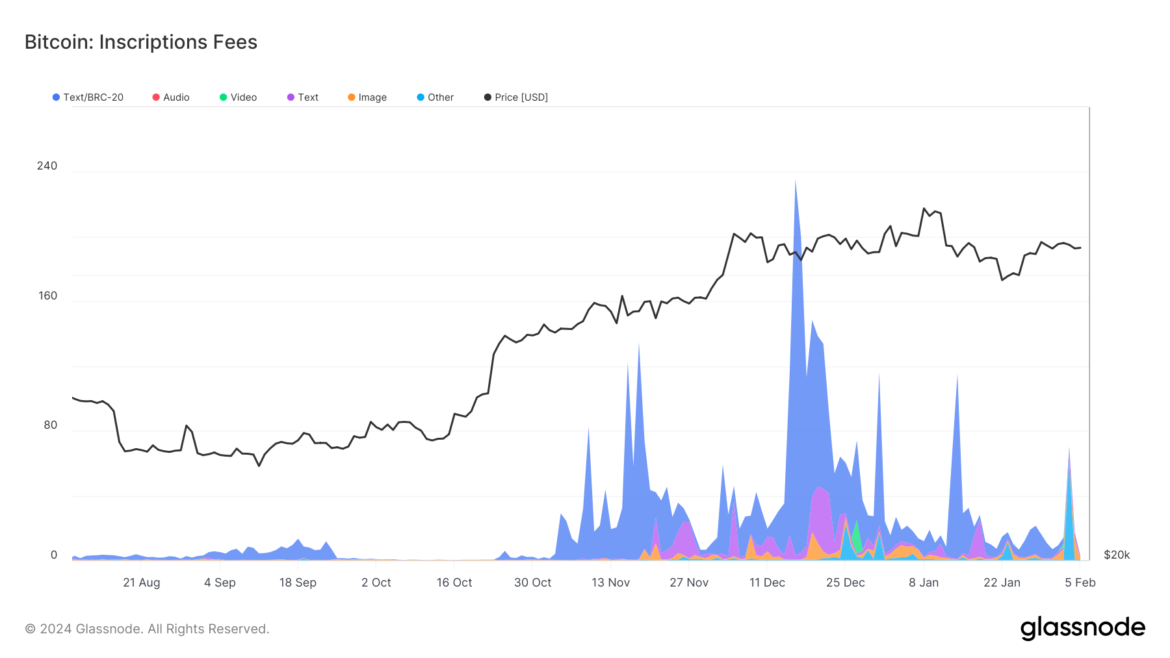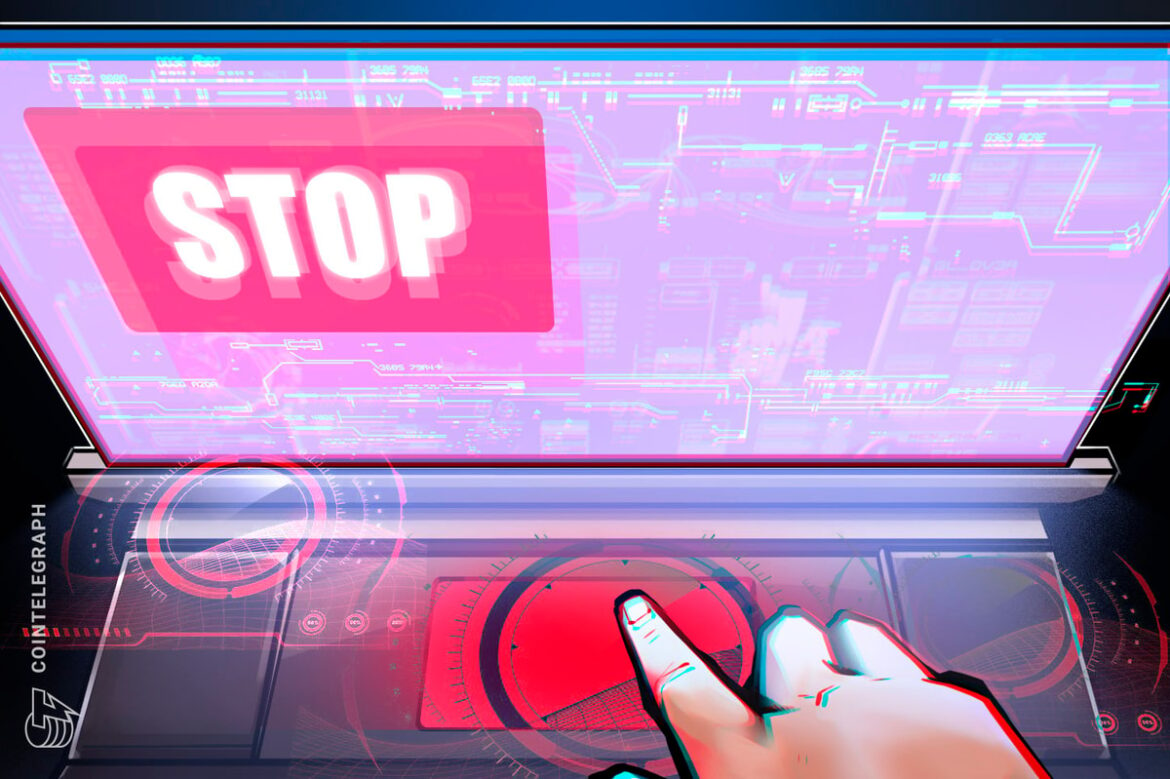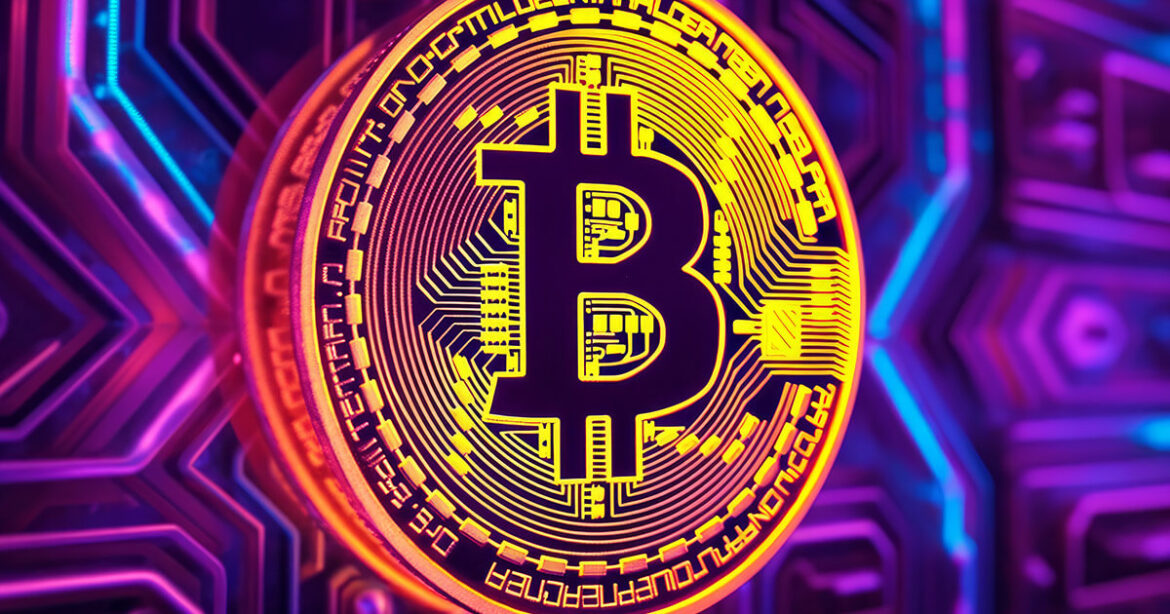 Following the debut of the Dencun upgrade and Ethereum blobs, enthusiasts have devised methods to embed data akin to how Ordinal inscriptions operate. Since this development, inscription-based activities now account for over 40% of blob transactions, leading to a significant increase in network activity. This uptick has resulted in a congestion of blob transactions, pushing […]
Following the debut of the Dencun upgrade and Ethereum blobs, enthusiasts have devised methods to embed data akin to how Ordinal inscriptions operate. Since this development, inscription-based activities now account for over 40% of blob transactions, leading to a significant increase in network activity. This uptick has resulted in a congestion of blob transactions, pushing […]
Source link
Inscriptions
OrdinalsBot secures $3 million seed funding to turbocharge Bitcoin inscriptions ecosystem

Ordinals infrastructure platform OrdinalsBot said it raised over $3 million in its seed funding round to enhance opportunities within the broader Bitcoin ecosystem, according to a March 26 statement shared with CryptoSlate.
The funding round was led by DACM, with significant contributions from Eden Block and Nural Capital. Notable participants include WWVentures, Lightning Ventures, and Oak Grove Ventures.
With this latest funding injection, OrdinalsBot’s total funding now amounts to $4.5 million, as it had raised more than $1 million for its pre-seed funding.
OrdinalsBot launched last year after the Ordinals protocol became one of the primary narratives within the crypto community. Since then, the platform has developed a range of products facilitating the creation and management of Bitcoin inscriptions and BRC-20 tokens.
‘Enhancing opportunities’
The platform plans to leverage this fresh capital to enhance opportunities within the Ordinals and broader Bitcoin ecosystem.
To achieve this, the firm wants to scale up its team across all departments, particularly its development team, which would focus on pioneering solutions to empower users and developers within the ecosystem.
Toby Lewis, the co-founder of OrdinalsBot, emphasized the platform’s evolution from an automated inscription service to a multifaceted endeavor. He said:
“We initially launched as the first automated inscription service in the Bitcoin Ordinals ecosystem, and have since expanded in many ways and believe that this next chapter, with the support of our new investors, will further continue to put us in a position to turbocharge Bitcoin – the biggest and most decentralized chain in the world.”
Similarly, Brian Laughlan, the other co-founder, explained Bitcoin’s pivotal role as the backbone of decentralized finance and highlighted OrdinalsBot’s contribution to establishing data infrastructure on the Bitcoin blockchain.
Furthermore, DACM CEO Richard Galvin commended OrdinalsBot’s commitment to innovation in Bitcoin’s ordinal inscriptions. He noted the platform’s involvement in mining the largest BTC block to date, including three of the ten largest BTC inscriptions recorded last month.
Disclaimer: A few members of CryptoSlate’s team made a small investment in OrdinalsBot because we believe in the team and project.
The post OrdinalsBot secures $3 million seed funding to turbocharge Bitcoin inscriptions ecosystem appeared first on CryptoSlate.
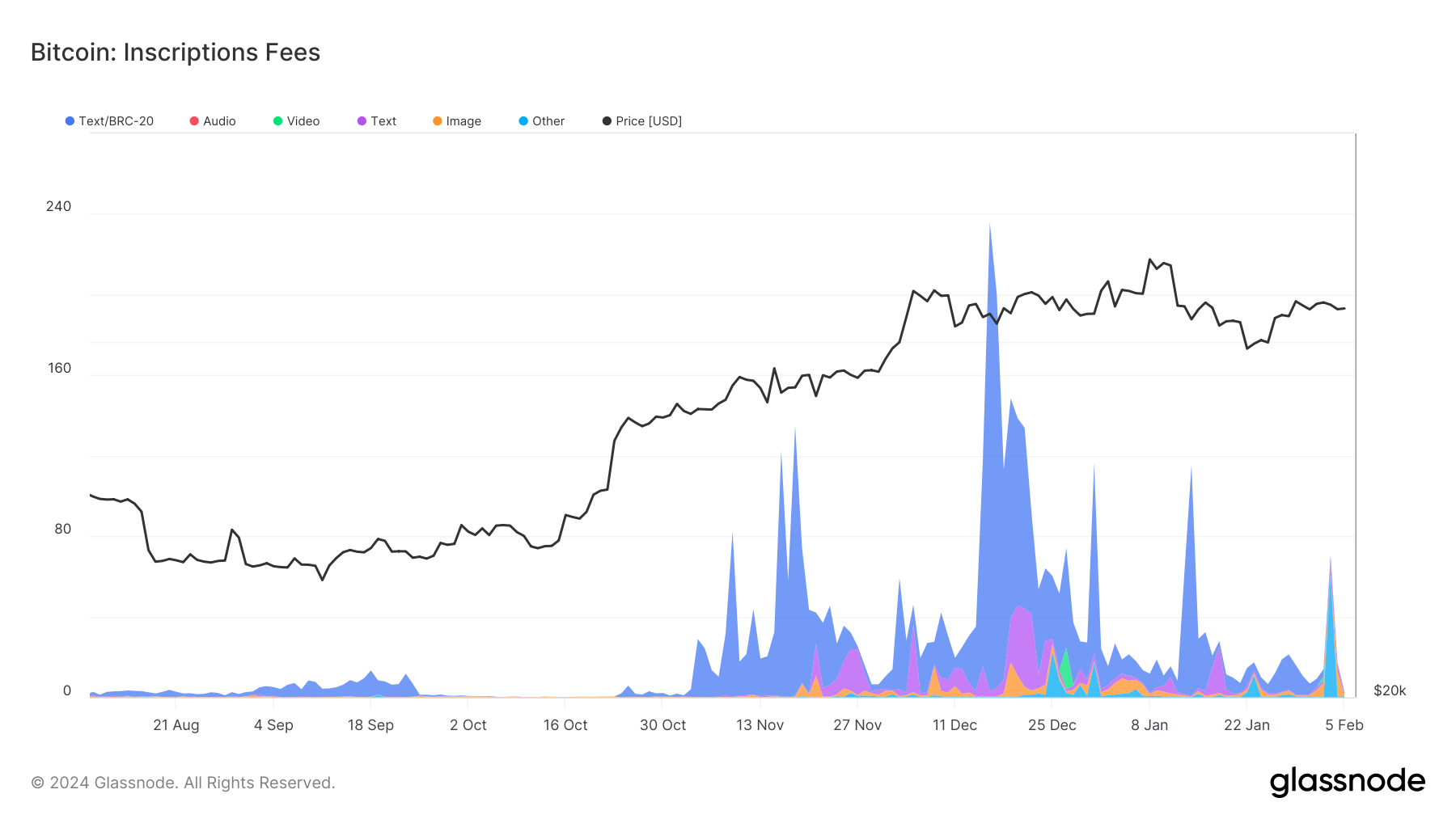
What is CryptoSlate Alpha?
A web3 membership designed to empower you with cutting-edge insights and knowledge. Learn more ›
Connected to Alpha
Welcome! 👋 You are connected to CryptoSlate Alpha. To manage your wallet connection, click the button below.
Oops…you must lock a minimum of 20,000 ACS
If you don’t have enough, buy ACS on the following exchanges:
Connect via Access Protocol
Access Protocol is a web3 monetization paywall. When users stake ACS, they can access paywalled content. Learn more ›
Disclaimer: By choosing to lock your ACS tokens with CryptoSlate, you accept and recognize that you will be bound by the terms and conditions of your third-party digital wallet provider, as well as any applicable terms and conditions of the Access Foundation. CryptoSlate shall have no responsibility or liability with regard to the provision, access, use, locking, security, integrity, value, or legal status of your ACS Tokens or your digital wallet, including any losses associated with your ACS tokens. It is solely your responsibility to assume the risks associated with locking your ACS tokens with CryptoSlate. For more information, visit our terms page.
There has been a notable spike in the number of Polkadot transactions in recent days. The surge also coincides with DOT prices racing to new 2023 highs when writing on December 22.
Taking to X, asynchronous rob noted that Polkadot is currently processing around 250,000 transactions per hour or 400-450 per block. Polkadot is a modern blockchain that aims to drive blockchain interoperability.
Based on its design, relying on a Relay Chain and numerous Parachains, the network can process transactions cheaply, considering its high capacity.
Polkadot Transactions Swelling: Blame Dota and Inscriptions
The rapid expansion of transactions on Polkadot can be attributed to the recent launch of inscriptions, a new type of cross-chain asset developed by the Dota platform. Uniquely, Dota’s inscriptions aim to simplify the process of deploying and minting assets on Polkadot’s parachains.
Though parachains operate independently as “chains” that rely on the Relay Chain for security, this design will eliminate the need for Cross-Chain Message Forma (XCM), which is needed for Polkadot parachains to communicate.
Usually, the XCM requires complex coding and can be time-consuming. Therefore, the simplicity of DOT-20 inscriptions by Dota directly explains why there is a surge in the number of transactions.
According to Dota on X, inscriptions on Polkadot account for 98% of the recent transaction volume.

Though there has been a change in the number of transactions processed, transaction fees on Polkadot remain low. At the same time, the network hasn’t “skipped a bit,” with capacity being around 10%.
By how Polkadot is designed, network fees will increase only once 25% of the total network capacity is changed. To reach this level, each block being confirmed on Polkadot must pack at least 1,250 transactions.
This will require even more inscriptions to be created via Dota, meaning despite the observed spike, Polkadot is technically underutilized from a bandwidth perspective.
Will DOT Continue Rising In 2024?
While the deluge of transactions also coincides with rising DOT prices, currently at 2023 highs, there have been concerns about inscriptions causing network congestion in a network like Bitcoin facing scaling challenges.
Critics maintain that inscriptions, though defended by some, serve nothing more than spamming the network and discouraging use due to accompanying increases in transaction fees.
For now, it remains to be seen if inscriptions will be sustainable, helping onboard more users. So far, Polkadot, as mentioned, can handle the uptick in transactions.
Even so, if there is a 3X rise in transactions exceeding the 1,250 transactions per block threshold, the demand for DOT will rise. Subsequently, DOT will likely trend higher towards $10 and other critical resistance levels.
Feature image from Canva, chart from TradingView
Disclaimer: The article is provided for educational purposes only. It does not represent the opinions of NewsBTC on whether to buy, sell or hold any investments and naturally investing carries risks. You are advised to conduct your own research before making any investment decisions. Use information provided on this website entirely at your own risk.
Arbitrum network went offline for 78 minutes because of inscriptions
Ethereum layer-2 network Arbitrum One has experienced an outage on December 15 for approximately 78 minutes, but is now back online, according to a statement made by the network’s Discord community manager, Ricardo “Gordan.” Gas fees on the network are still abnormally high, but should “normalize”

The sequencer “stalled” at 10:29 am ET (13:29 UTC) during a “significant surge in network traffic,” according to an alert that was posted to Arbitrum’s official status page. At 5:58 pm UTC, Arbitrum’s block explorer, Arbiscan, showed that some blocks were being produced. However, they appeared to be only processing two transactions in each block.

Some users took to X (Twitter) to speculate about whether the outage was caused by inscriptions, as this would explain the small number of transactions in each block. This was later confirmed by the team. Inscriptions are a type of data format used in some blockchain networks and are often used to carry collectible images. Inscriptions originated on Bitcoin but have recently been used on Arbitrum thanks to the MemeOrdi protocol.
According to blockchain analytics platform Layer2Beat, users of Abitrum can withdraw their assets to Ethereum even if the sequencer is down, although this will take 24 hours to process. If proposer validators are also down, the process will take at least six days, eight hours, 43 minutes, and 36 seconds. The network was down for less than two hours.
Update (Dec. 15, 8:34 pm UTC): This article has been updated to include a statement from the team that the network is up and running.
This is a developing story, and further information will be added as it becomes available.
Sustained Bitcoin mempool congestion shows unwavering demand for Ordinals Inscriptions
Earlier this year, the market saw an unprecedented uptake of Ordinals and its associated Inscriptions. Ordinals serve as a unique numbering scheme for satoshis, allowing users to track and transfer individual sats. Inscriptions are a form of NFTs on Bitcoin’s network, enabling users to etch their messages on the Bitcoin blockchain. The introduction of the Ordinals theory marked a significant milestone, heralding Bitcoin’s foray into the NFT space.
When the popularity of Ordinals and Inscriptions surged, some market observers speculated that it was a fad. However, recent on-chain data suggests otherwise. The demand for Ordinals remains robust, and the Inscriptions phenomenon might not be waning for a while.
The Bitcoin mempool, a holding area for unconfirmed transactions, is a critical metric to gauge this demand. An overflowing mempool indicates a high volume of pending transactions, often leading to increased transaction fees and congestion in the Bitcoin network. The mempool hasn’t cleared since April this year, indicating sustained activity and demand.
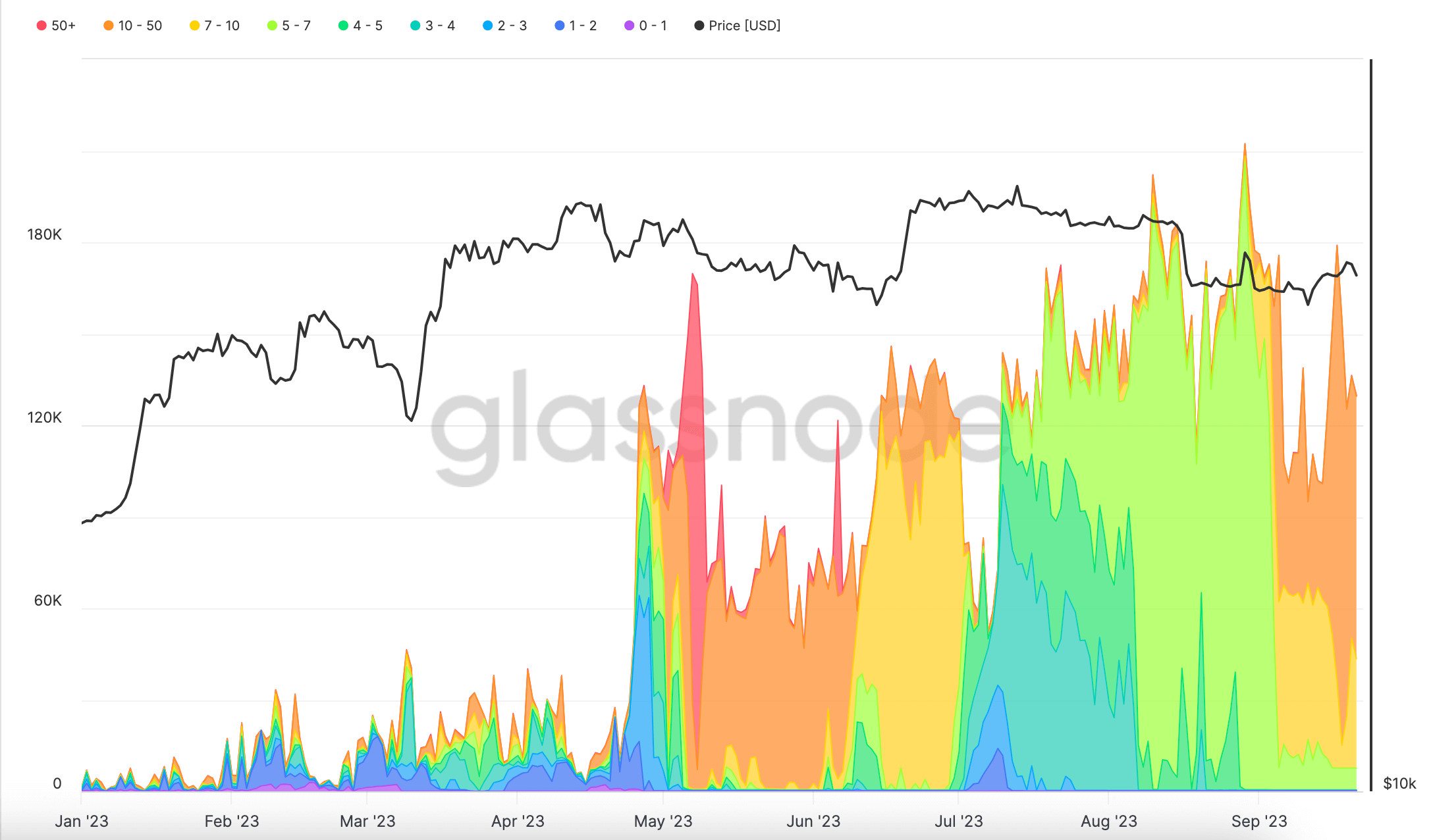
This mempool congestion correlates with a surge in the count of new Inscriptions.
According to data from Glassnode, there was a notable increase in the daily creation of new Inscriptions towards the end of April. By mid-May, 400,000 new Inscriptions were created in just one day. While a dip in June suggested a potential waning interest, the numbers bounced back. September ended with an all-time high of 450,000 new Inscriptions in a single day.
While the early days saw the dominance of image-based Inscriptions, text-based ones have now taken the lead.
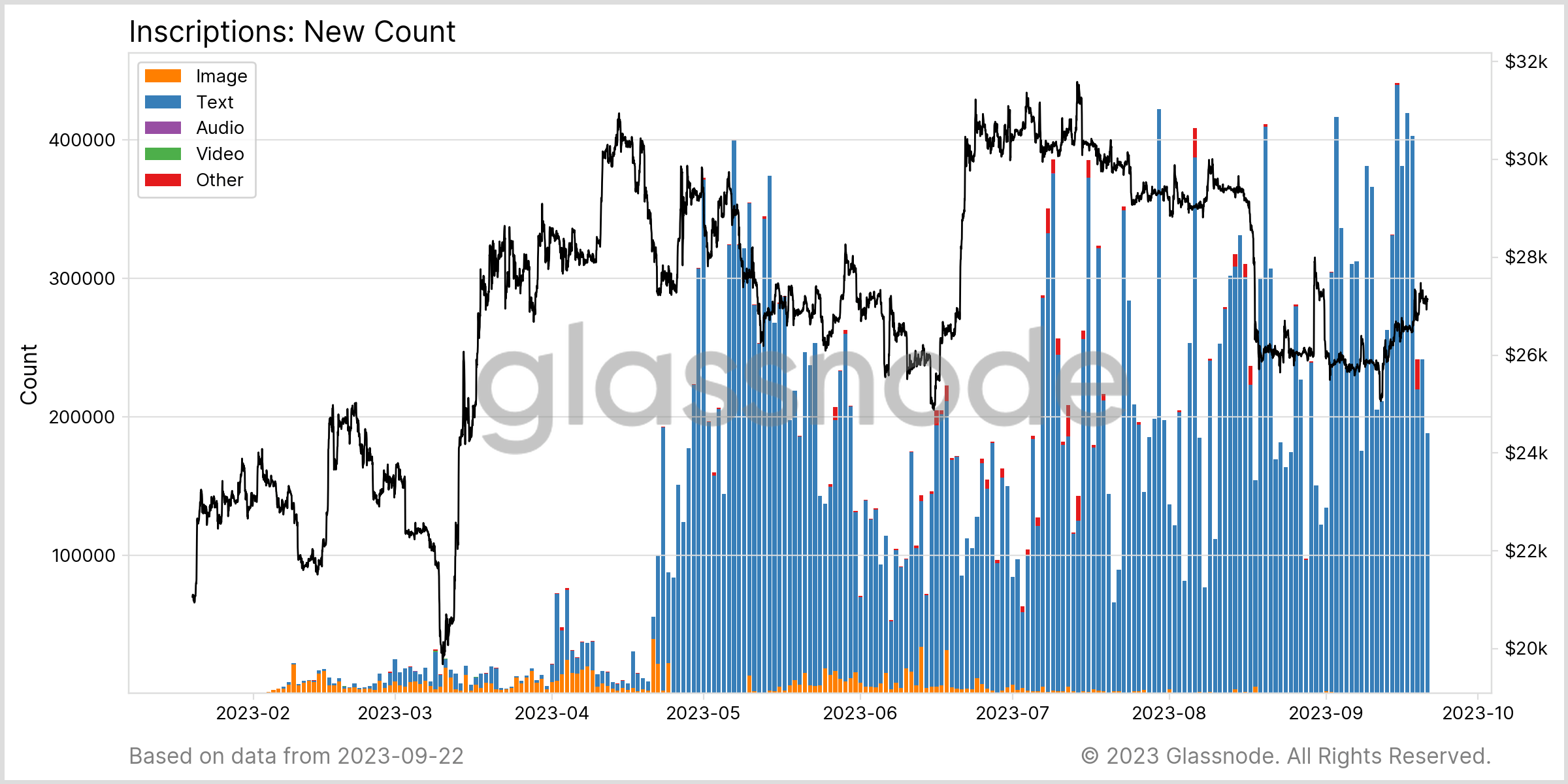
Bitcoin transaction fees spiked in May due to the surge in Inscriptions and the congested mempool. However, despite the continued demand for Ordinals, the fees have since stabilized. This stabilization suggests that the market has adjusted to the Inscriptions phenomenon, and the Bitcoin network has found equilibrium.
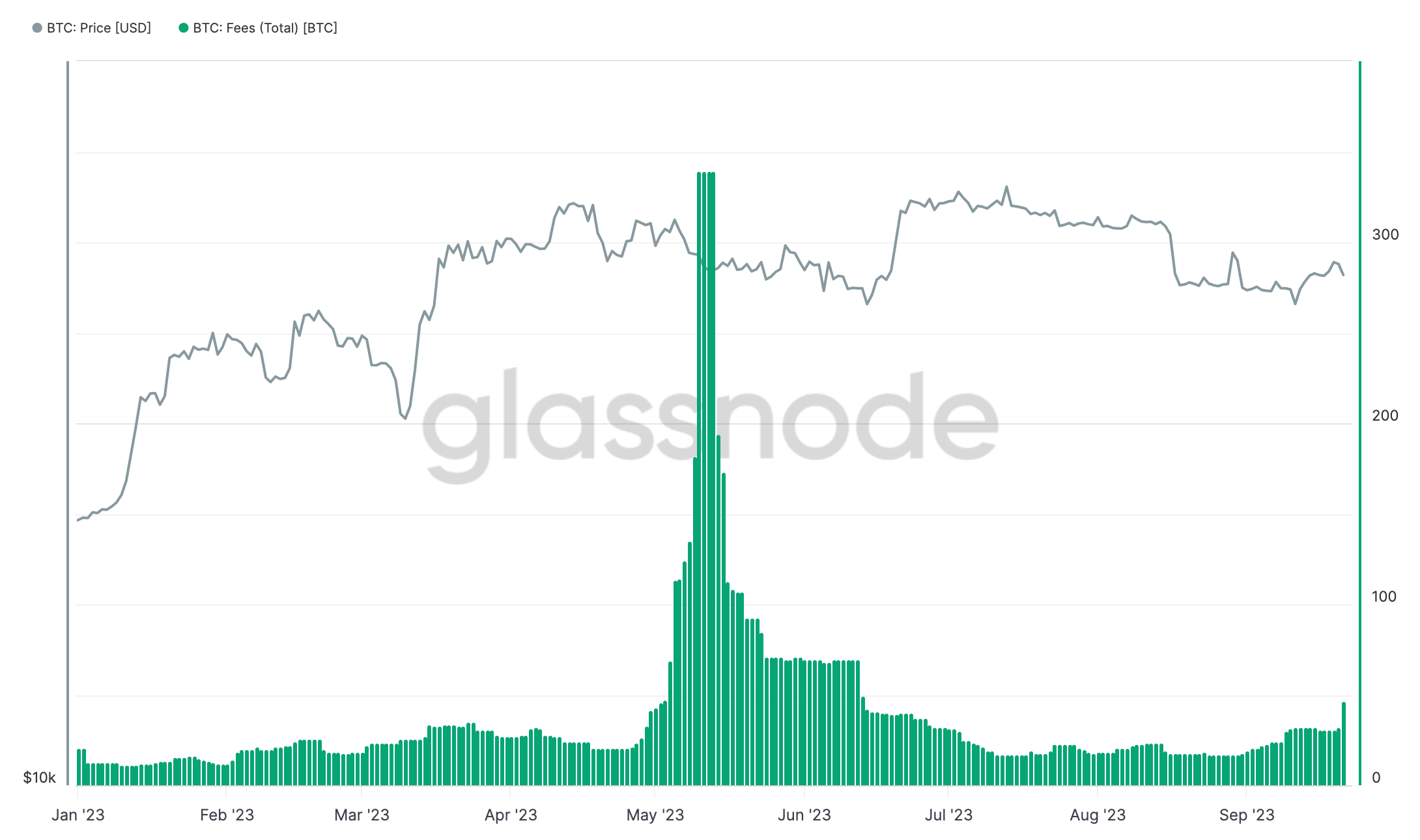
The consistent demand for Inscriptions suggests they may have found a niche and a dedicated user base. Their impact on the Bitcoin network, especially transaction fees, and blockspace, cannot be ignored. While the initial surge might have caused some disruptions, the network’s ability to adapt and stabilize showcases its resilience.
The post Sustained Bitcoin mempool congestion shows unwavering demand for Ordinals Inscriptions appeared first on CryptoSlate.

